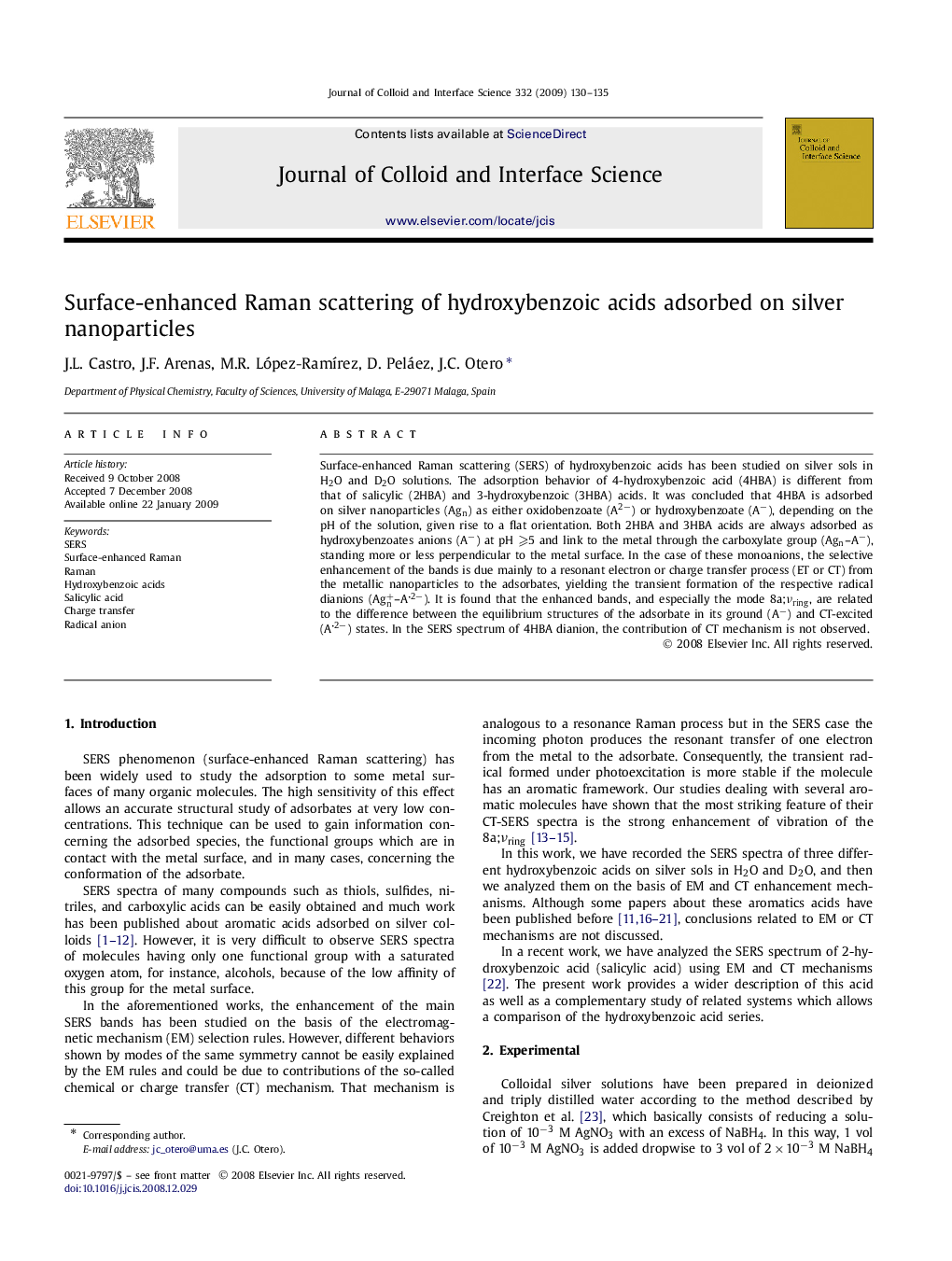| Article ID | Journal | Published Year | Pages | File Type |
|---|---|---|---|---|
| 610494 | Journal of Colloid and Interface Science | 2009 | 6 Pages |
Surface-enhanced Raman scattering (SERS) of hydroxybenzoic acids has been studied on silver sols in H2O and D2O solutions. The adsorption behavior of 4-hydroxybenzoic acid (4HBA) is different from that of salicylic (2HBA) and 3-hydroxybenzoic (3HBA) acids. It was concluded that 4HBA is adsorbed on silver nanoparticles (Agn) as either oxidobenzoate (A2−) or hydroxybenzoate (A−), depending on the pH of the solution, given rise to a flat orientation. Both 2HBA and 3HBA acids are always adsorbed as hydroxybenzoates anions (A−) at pH ⩾5 and link to the metal through the carboxylate group (AgnA−), standing more or less perpendicular to the metal surface. In the case of these monoanions, the selective enhancement of the bands is due mainly to a resonant electron or charge transfer process (ET or CT) from the metallic nanoparticles to the adsorbates, yielding the transient formation of the respective radical dianions (Ag+nA⋅2−). It is found that the enhanced bands, and especially the mode 8a;νringνring, are related to the difference between the equilibrium structures of the adsorbate in its ground (A−) and CT-excited (A⋅2−) states. In the SERS spectrum of 4HBA dianion, the contribution of CT mechanism is not observed.
Graphical abstractDifferent enhancement mechanisms are observed in the SERS of hydroxybenzoic acids. It is shown that the charge-transfer mechanism depends on the ionization degree which is in turn related to the position of the substituent.Figure optionsDownload full-size imageDownload as PowerPoint slide
